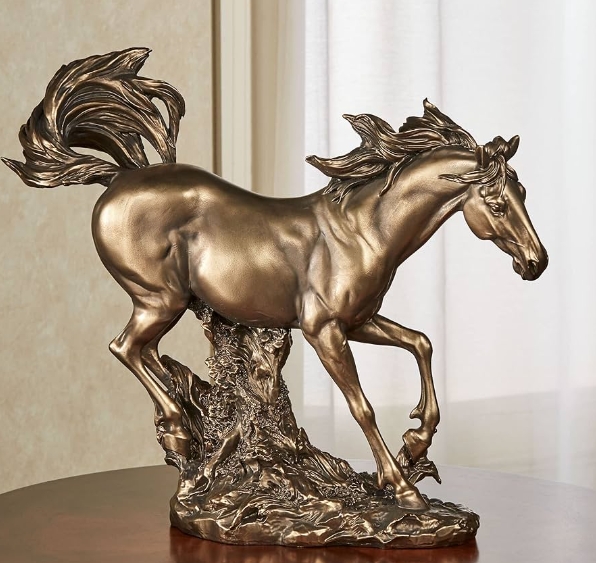As an ancient and classic art form, bronze horse sculpture has always been regarded as a symbol of strength and dignity. Whether in the ancient court or in modern public spaces, this kind of sculpture always attracts people’s attention and conveys beauty and power beyond time and space.
The reason why copper is widely used as a sculpture material is that it has good weather resistance and shaping ability, which is suitable for complex and delicate artistic expression. Bronze horse sculpture is common in art exhibitions and public art installations of various sizes, especially outdoor bronze horse sculptures, which are more common in city squares, parks and museums, becoming a part of urban culture and history.
These outdoor bronze horse sculptures are not only decorations of urban landscapes, but also symbolize the vitality and spirit of the city. For example, many cities will place bronze horse sculptures to commemorate important events or important figures in history, showing the bravery and loyalty of horses through the image and posture of the sculptures, inspiring everyone who passes by it.
In the creation process, bronze horse sculpture requires artists to have superb skills and profound cultural heritage. From design sketches to finished works, each step requires precise calculations and manual processing. Artists usually first make a model with clay or wax, then pour the copper liquid into the mold through the lost wax casting method, and finally after cooling, polishing and coloring, a vivid bronze horse sculpture is born.
Modern bronze horse sculpture is not limited to traditional expression techniques. Many artists also try to incorporate modern elements and innovative technologies into sculptures, making each work have a unique artistic style and characteristics of the times. This innovation not only reflects the artist’s personal philosophy, but also makes bronze horse sculpture a bridge connecting the past and the future.
In short, bronze horse sculpture, as an artistic expression, has been deeply rooted in human culture. Whether in exquisite indoor art galleries or in spacious outdoor public spaces, these sculptures tell historical stories, show the charm of art, and constantly inspire people’s pursuit and thinking of beauty.




